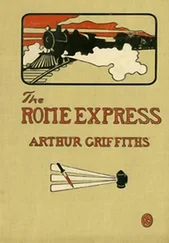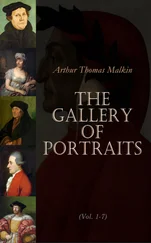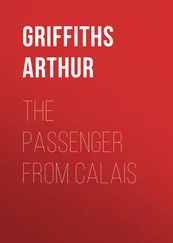1 ...8 9 10 12 13 14 ...40 In 1629 a petition from the gaoler to the king sets forth[26] that “by reason of the great ruins of the gaol it is now in hand to be repaired.” The gaoler further states that there is great danger lest in time of repair some of the prisoners should escape, and prays directions to the Lord Mayor and Recorder to certify how many prisoners are capable of His Majesty’s mercy, and to the Attorney General to prepare pardons. This document is under-written, “Reference to Recorder to certify, and to the Attorney General to prepare, a pardon;” following which is a recommendation from Sir Heneage Finch (the first-named official) to release forty-four. Subsequently the east side of Newgate was “begun to be repaired, Sir James Campbell being mayor, and finished the year following, Sir Robert Drury, Baronet, being mayor.” The expense was borne wholly or partly by the locality, as the records show in 1632 an account of the assessment of the parish of St. Stephen Walbrook, in which “two fifteenths were to be gathered for repairing Newgate.” It is this re-edification which is referred to in Lupton’s ‘London Carbonadoed,’ 1638, who speaks of Newgate as new fronted and new faced.
I have been unable to ascertain any exact figure of this old Newgate, either in its ancient or improved aspect. The structure, such as it was, suffered so severely in the great fire of 1666 that it became necessary to rebuild it upon new and more imposing lines.
This may be described as the third edifice: that of the twelfth century being the first, and Richard Whittington’s the second. Of this third prison details are still extant, and I propose to describe it fully on a later page.[27]
CHAPTER II.
NEWGATE IN THE SIXTEENTH CENTURY.
Table of Contents
Prison records meagre—Administration of justice and state of crime—Lenity alternates with great severity—Disturbances in London—The ‘Black Waggon’—A ’prentice riot—Criminal inmates of Newgate—Masterless men—Slandering the Corporation—Robbery with violence—Debtors—Conscience prisoners—Martyrs in reign of Henry VIII.—Religious dissidents: Porter, Anne Askew—Maryan persecutions—Rogers—Bishop Hooper—Philpot—Alexander the cruel gaoler of Newgate—Underhill the hot gospeller in Newgate—Crime in Elizabeth’s reign—The training of young thieves—Elizabethan persecutions: both puritans and papists suffered—The seminary priests—Political prisoners—Condition of gaol—Oppression of the inmates and their disorderly conduct—Gaolers of that period generally tyrants—Crowder, keeper of Newgate, called to account.
THE prison records of the sixteenth century are very meagre. No elaborate system of incarceration as we understand it existed. The only idea of punishment was the infliction of physical pain. There were prisons, but these receptacles, except for debtors, were only the ante chambers of the pillory and the scaffold. The penalties inflicted were purely personal, and so to speak final; such as chastisement, degradation, or death. England had no galleys, no scheme of enforced labour at the oar, such as was known to the nations of the Mediterranean seaboard, no method of compelling perpetual toil in quarry or mine. The germ of transportation no doubt was to be found in the practice which suffered offenders who had taken sanctuary to escape punishment by voluntary exile,[28] but it was long before the plan of deporting criminals beyond seas became the rule. In Henry VIII.’s time, says Froude, “there was but one step to the gallows from the lash and the branding-iron.” Criminals did not always get their deserts, however. Although historians have gravely asserted that seventy-two thousand executions took place in this single reign, the statement will not bear examination, and has been utterly demolished by Froude.[29] As a matter of fact offenders far too often escaped scot free through the multiplication of sanctuaries, which refuges, like that of St. Martin’s-le-Grand, existed under the very walls of Newgate, the negligence of pursuers, and not seldom the stout opposition of the inculpated.[30] Benefit of clergy claimed and conceded on the most shadowy grounds was another easy and frequent means of evading the law. Some judges certainly had held that the tonsure was an indispensable proof; but all were not so strict, and “putting on the book,” in other words, the simple act of reading aloud, was deemed sufficient. So flagrant was the evasion of the law, that gaolers for a certain fee would assist accused persons to obtain a smattering of letters, whereby they might plead their “clergy” in court. It may be added that although the abuse of the privilege was presently greatly checked, it was not until the reign of William and Mary that benefit of clergy was absolutely denied to burglars, pickpockets, and other heinous offenders.
Yet there were occasional spasmodic intervals of extraordinary severity. Twenty thieves, says Sir Thomas More in his ‘Utopia,’ might then be seen hanging on a single gibbet. Special legislation was introduced to deal with special crimes. Although there was an appropriateness in the retribution which overtook him, the sentence inflicted upon the Bishop of Rochester’s cook in 1531, under a new act passed on purpose, was ferociously cruel. This man, one Richard Rose or Rouse, was convicted of having poisoned sixteen persons with porridge specially prepared to put an end to his master. The crime had been previously almost unknown in England, and special statutory powers were taken to cope with it. An act was at once passed defining the offence to be high treason, and prescribing boiling to death as the penalty. Rose was accordingly, after conviction, boiled alive in Smithfield. It may be added that this cruel statute, which may be read in extenso in Froude, was soon afterwards repealed, but not before another culprit, Margaret Davy by name, had suffered under its provisions for a similar offence.
Newgate, like all other gaols, was at times scandalously over-crowded, not only with the felons and trespassers who long languished waiting trial, but with far less guilty offenders. There were also the debtors and the conscience prisoners: the delinquents whose crime was impecuniosity or commercial failure, and the independent thinkers who stoutly maintained their right to profess forms of belief at variance with the government creed of the hour. It is only a passing glimpse that we get of the meaner sort of criminal committed to Newgate in these times. The gaol, as I have said, was but the ante-chamber to something worse. It was the starting-point for the painful promenade to the pillory. The jurors who were forsworn “for rewards or favour of parties were judged to ride from Newgate to the pillory in Cornhill with paper mitres on their heads, there to stand, and from thence again to Newgate.”[31] Again, the ringleaders of false inquests, Darby, Smith, and Simson by name, were, in the first year of Henry’s reign (1509), condemned to ride about the city with their faces to the horses’ tails, and paper on their heads, and were set on the pillory at Cornhill. After that they were brought back to Newgate, where they died for very shame.[32]
A longer story and a heavier doom was that of the ’prentice lads who upon ‘Evil May-day,’ as it was afterwards called, raised a tumult in the city against the competition of foreign workmen, who were about this time established in great numbers in the suburbs. One John Lincoln, a meddlesome city broker, was so much exercised at this foreign interference that he went about seeking a parson who would declaim against it from the pulpit. One Dr. Bell or Bele, who was to preach at the Spital Church, agreed to read from the pulpit a bill which this Lincoln had drawn up, and which set forth the wrongs suffered by native artificers and merchants. Dr. Bell followed the reading by an inflammatory sermon upon the text Pugna pro Patria , by which “many a light-headed person took courage and openly spoke against” the foreigners. As divers ill things had been done of late by these strangers, the people’s rancour was kindled most furiously against them. Conflicts took place in the streets between “the young men of the city” and the strangers, so that several of the former were committed to Newgate. Among others Stephen Studley, skinner, and Stephenson Betts. Then arose “a secret rumour that on May-day following the city would slay all the aliens.” News thereof reached Cardinal Wolsey, who summoned the Lord Mayor, and desired him to take all due precautions. It was settled by agreement between the Corporation and the cardinal that every citizen should be commanded to shut up his doors after nine at night, and keep his servants within. It so chanced that Alderman Sir John Mundy the same night, coming from his ward, found two young men playing at the bucklers, and many others looking on. The order for early closing had not indeed been fully circulated as yet. Sir John Mundy ordered the combatants to desist, and on their hesitation was for sending them to the Compter. But the apprentices rose against the alderman, crying, “ ’Prentices! clubs! clubs!” A crowd soon collected, the alderman took to flight, and by eleven at night there were in Cheap six or seven hundred “serving-men, watermen, courtiers, and others,” and out of St. Paul’s Churchyard came some three hundred more. The mob, growing riotous, attacked the Compter and released all prisoners confined therein for “hurting the strangers”; thence they went to Newgate and set free Studley and Betts. Gaining courage by these excesses, they ranged the streets, throwing sticks and stones, spoiling all they found. The strangers were the principal victims. The house of one Mewtas, a Picard, and those of other Frenchmen residing at the Greengate, Leadenhall, were broken open and plundered. The riot continued till three in the morning, “at which time they began to withdraw, but by the way were taken by the mayor and others, and sent to the Tower, Newgate and the Compters to the number of three hundred.”
Читать дальше












